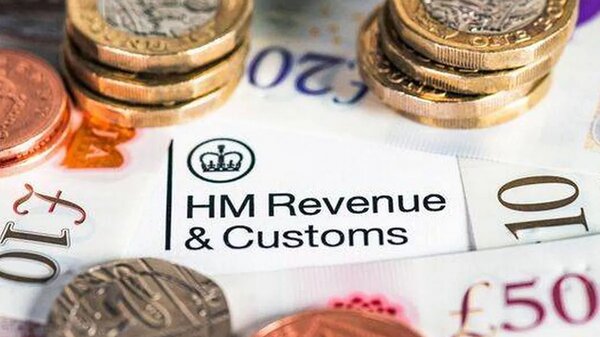Maternity Allowance vs Statutory Maternity Pay: Understanding Tax Implications
Having a baby brings joy and paperwork, especially when it comes to maternity pay. Understanding the differences between Maternity Allowance and Statutory Maternity Pay is crucial for financial planning.
The two benefits have different eligibility criteria, payment amounts, and tax implications. Getting this right means maximising your income during maternity leave.
Need help tracking your maternity benefits and understanding the tax implications? The UK's first personal tax app, Pie tax, handles this automatically in your personal tax dashboard. Or if you're just here to get to grips with it all, let's break it down!
How Maternity Allowance and SMP Differ
Statutory Maternity Pay (SMP) comes from your employer if you’ve been with them long enough and meet earnings requirements. Maternity Allowance (MA) is the government’s safety net when you don’t qualify for SMP.
The big tax difference? SMP counts as earnings, so it’s taxed like your regular salary. SMP is paid in the same way as your usual wages, often paid monthly or weekly depending on your employer's payroll schedule. MA is completely tax-free, which can make a significant difference to your take-home amount.
SMP is typically more generous, especially if you earn above average wages. You’ll get 90% of your average pay for the first six weeks, which can be substantial.
The application processes differ too SMP goes through your employer while MA requires a direct application to the government. This affects how quickly you might receive payments.

Who Qualifies for Statutory Maternity Pay?
To get SMP, you need to have worked for your employer continuously for at least 26 weeks by the 15th week before your baby’s due. Your average weekly earnings must reach the Lower Earnings Limit (currently £123 per week). Agency workers can also qualify for SMP if they meet the same employment and earnings criteria.
You’ll need to provide your employer with proof of pregnancy usually your MATB1 certificate from your midwife or doctor. Notice matters too; tell your employer at least 28 days before you want your leave to start.
If you tick all these boxes, your employer is legally required to pay you SMP. Your employment status whether permanent, temporary, or agency affects your entitlement to SMP. They can’t refuse it, even if they’re unhappy about your pregnancy or absence. If you have more than one employer, you may be able to claim SMP from each, provided you meet the eligibility criteria with each employer.
When I worked in HR, I saw several cases where women narrowly qualified for SMP by just a few days of employment. Those few days made thousands of pounds of difference to their maternity income.
Who Gets Maternity Allowance Instead?
MA is perfect if you’re self-employed, recently changed jobs, or don’t earn enough to qualify for SMP. You may be eligible for MA whether you are employed or self employed, as long as you meet the qualifying conditions. You need to have worked for at least 26 weeks in the 66 weeks before your due date. This 66-week timeframe is called the 'test period' and is used to assess your eligibility for Maternity Allowance.
For the standard rate (currently up to £172.48 weekly), you must have earned at least £30 per week for 13 of those weeks. Self-employed? You’ll need to have paid enough Class 2 National Insurance contributions.
Even if you help with your partner’s business but don’t get paid, you might still qualify for MA. Unpaid work for a self employed spouse or civil partner can count towards eligibility for MA. It’s worth checking, as many women miss out on this lesser-known eligibility route. If you assist a spouse or civil partner who is registered as self-employed, you may be able to claim maternity allowance for up to 14 weeks.
The rules can seem complex, but they’re designed to catch those who fall through the SMP net. To claim MA, you will need to provide proof of your employment, self-employment, or unpaid work, such as payslips, invoices, or a self assessment tax return. Don’t assume you won’t qualify without checking.
Your gross earnings during the test period are used to calculate your MA entitlement.

How Much Money Will You Get?
SMP starts generous with 90% of your average weekly earnings for the first 6 weeks. For the remaining 33 weeks, SMP pays either £172.48 per week or 90% of your average earnings whichever is lower. This is a flat rate set by the government.
MA is simpler but potentially less generous: up to £172.48 per week or 90% of your average weekly earnings for 39 weeks. MA can be paid weekly or every four weeks, depending on your preference. Self-employed women who haven’t paid enough Class 2 NI might only get £27 per week.
Both benefits can start from 11 weeks before your due date. This is calculated from the weeks before your baby is due, and the maternity pay period can begin as early as the 11th week before the expected week of childbirth. This gives you flexibility about when to begin your maternity leave, depending on how you’re feeling. If your baby is born early, your maternity pay period will start the day after the baby is born.
The difference between SMP and MA can be substantial. The week before your baby is due is a key reference point for eligibility, and the expected week of childbirth is used to determine when payments can start. A woman earning £30,000 could receive nearly £1,000 more in the first six weeks with SMP compared to MA.
Tax Implications: What You Need to Know
SMP is treated exactly like your salary for tax purposes. Income tax and National Insurance get deducted through PAYE, just like your regular wages.
Your employer handles all the tax admin for SMP. You don’t need to worry about calculating anything yourself, which is one less thing to think about.
Maternity Allowance, however, is completely tax-free. You won’t pay a penny in tax on MA payments, which can make it more valuable than it first appears.
If you’re self-employed and receive MA, you still need to declare it on your Self Assessment. Make sure your earnings and any benefits are reported for the correct tax year.
It goes in the non-taxable state benefits section, not as part of your taxable income. Maternity Allowance and Statutory Maternity Pay are not classed as public funds, so they do not affect immigration status.
Getting the tax right matters. Self employment income and maternity benefits must be accurately reported to avoid issues with HMRC. Mistakes could mean paying too much tax or facing an unexpected tax bill later when HMRC catches up.

How to Apply and Important Deadlines
For SMP, tell your employer you’re pregnant and provide your MATB1 certificate. This is available from week 20 of pregnancy from your midwife or doctor.
Your employer should confirm your SMP eligibility in writing. They should explain how much you’ll receive and when payments will start and end.
For MA, complete form MA1 online or by post. Claiming Maternity Allowance may require submitting additional documents, and if you are self-employed, you may need to make an early payment of Class 2 National Insurance contributions to ensure you qualify for the full rate.
With MA applications, you’ll need to provide evidence of your income or employment. Keep payslips, invoices, or tax returns handy when applying.
Both benefits can be backdated in certain circumstances. There is a time limit for making claims and appeals, and if your claim is refused or you disagree with the amount awarded, you can request a mandatory reconsideration.
For further information, or if you have questions or need help with your claim, contact HMRC.
Final Thoughts
Understanding which maternity benefit applies to you helps with financial planning during an already busy time. The tax differences between SMP and MA can significantly impact your household budget.
Remember that while SMP is taxable and MA is tax-free, SMP often provides more money overall. This is especially true in those crucial first six weeks when expenses for baby items are high.
Keep all documentation related to your maternity benefits for at least 22 months. You might need it for tax purposes later, particularly if you’re self-employed or change jobs.
Don’t forget to check if you qualify for other support like Child Benefit or Tax-Free Childcare. You may also be eligible for other benefits such as Universal Credit, Housing Benefit, Employment and Support Allowance, and Support Allowance, especially if your income is low or you are unemployed. These can provide additional financial help alongside your maternity payments. Your employment rights are protected during maternity leave, including protection against unfair treatment and safeguarding of pension contributions.

Pie tax: Simplifying Maternity Benefits Tax
Juggling new parenthood with understanding maternity pay tax doesn't have to be overwhelming. The UK's first personal tax app, Pie tax, automatically categorises your SMP or MA payments correctly.
Our dashboard shows exactly how these payments impact your tax position throughout the year. You'll always know where you stand financially during maternity leave.
Smart notifications remind you about important deadlines for claiming benefits. This ensures you never miss out on money you're entitled to when you need it most.
For self-employed mums claiming MA, we track how this non-taxable income fits alongside your business earnings. This makes completing your Self Assessment straightforward even during a busy time.
Want to see how we can help? Explore Pie tax today for clearer maternity benefit tracking and less tax stress during this special time.











